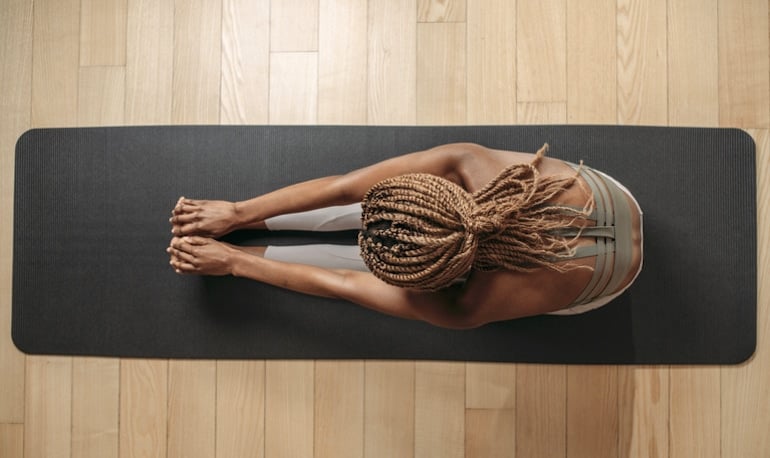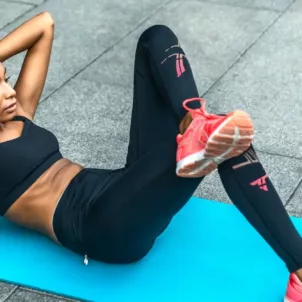Is there a definitive answer to how often you should exercise? Two trainers discuss the ins and outs of creating a consistent workout routine to meet your personal goals.
We’re inundated every day, if not hourly via social media, about fitness and overall wellness. Someone’s always telling us the best way to become fit and healthy, as though the only true answer to total health is from a certain regimen. However, our lives and bodies are all shaped by unique, cumulative circumstances and experiences. So how can any one method be trusted to offer success for all?
When it comes to exercise, the overall consensus is that the typical American needs more of it. But how about those who already incorporate movement into their daily lives? Also, how much is enough, and how much is too much?
Here, a couple of fitness experts weigh in on the topic—no pun intended.
How often should you exercise?
“A few factors come into play when deciding how often someone should work out and which forms of exercise are ideal for a person,” begins Jasmine Al-Masri, the lead instructor at Motivate Studios in Los Angeles.
“For general physical and mental health, a good rule is to move at least 30 minutes per day, most days per week,” she shares.
Of course, this quota is flexible. It’s also based on a number of individual factors, including your fitness goals, body type, and much more. That said, keep reading for more intel on creating the best fitness routine for you.
What’s the Best Type of Exercise to Lose Weight?
Stephanie Jameson, CPT, a trainer and co-founder of giveStrength in Los Angeles, has a methodical approach to this question.
“For weight loss and maintenance, a combo of resistance training (body weight or with equipment) and cardio (anything that elevates your heart rate and gets you sweaty) will help you meet your goal,” Stephanie begins.
Why You Should Mix Up Your Workouts
Both trainers agree that no matter your goal, you should switch things up.
“Light yoga, walking, playing with your kids, and of course other forms of exercise like cycling, kickboxing, dancing, Pilates, weight lifting—whatever activity you truly feel good and enjoy doing—[are all] perfect,” Jasmine shares.
Similarly, Stephanie recommends low-impact training for everyone. “I encourage all clients to incorporate yoga or Pilates at least once per week to keep their body flexible and functional,” she shares. These types of workouts can also “help avoid injuries that could get in the way of their fitness goals.”
Next, Jasmine mentions that since everyone is different, you should take time to experiment with types of workouts. And by experimentation, Jasmine doesn’t mean you should go for the gold immediately. Over-exertion can happen to anyone, at any stage of fitness, so always start slowly.
“See how you feel when you do mostly cardio versus strength training,” she suggests, “and check in with how your body, mood, and internal systems respond to it.”
This brings us back to Jasmine’s original point about movement: Find whatever it is that gets you moving, and aim to maintain it for at least 30 minutes on a consistent basis.
can you exercise too much?
This exercise-frequency question is near and dear to Jasmine, as she’s struggled in the past with overdoing it.
“I learned my lesson the hard way with injuries and missing periods due to over-exercising and under-fueling, so I can’t stress what I’m about to say enough. Any body movement is movement, and it’s sufficient,” she emphasizes.
That’s right. Jasmine’s energy levels and Pilates bod may lead some to assume she runs half-marathons twice a week. But the reality behind her success is finding her own happy middle ground and listening to her body’s needs.
ABOVE ALL, Find Balance
One thing Jasmine wants us to remember is that balance is essential. We all have different goals and responses to exercise, but it’s important to vary intensity rather than go all out, every time.
For instance, she doesn’t recommend doing HIIT (high-intensity interval training) every day. “If you like HIIT, then great! But throw some yoga or mat Pilates in there on other days, as well,” she recommends.
There’s no one-shoe-fits-all for workouts, so trial and error are part of the process. “However, balance and variety is definitely a rule I can say, with confidence, that every body responds well to,” she continues.
Then, she also has strong thoughts about allowing your body to rest and recover. “Take two to three days off. (Seriously, do it.) Regardless of how easy exercise is for you, [if you] take these days of total rest, you’ll see, feel, and think more results.”
The Bottom Line
All said, Stephanie says that consistency is key for any workout regimen you choose. “At the end of the day, the very best form of exercise is the one that you enjoy and will stick with,” she concludes.
And while a good sweat is certainly healthy, we don’t need to feel like we’ve failed ourselves if we don’t get exhausted from daily exertion. In fact, that’s not ideal.
So strike your balance, be sure to rest, and move in a way that makes you happy, not resentful. Above all, it’s most important to create a healthy habit out of exercise, rather than viewing it as just another obligation.












